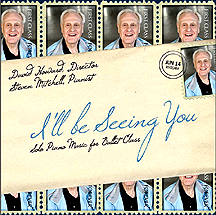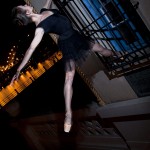
We love talking with musicians that are involved with ballet–after all–the music is such a big part of it! Today we have Christopher Hobson with us to talk about his experience playing for dancers and making music for class…
How did you get involved in doing music for ballet class?
I originally started playing for contemporary dance. I suppose like most musicians, I got into this by accident! I was playing a jazz gig and got talking to somebody at the bar who said they liked what I was playing and would I be interested in auditioning for a job playing for contemporary dance. As I wasn’t working at the time I thought ‘why not’! When I started I didn’t know what the job entailed and was thrown in at the deep end.
After a couple of years of contemporary dance I moved cities and took a job with Elmhurst School for Dance, specialising in ballet! This was the first time I’d ever played for ballet and again it was a real learning experience and some of the great teachers who were in this institution at the time took me under their wing and took the time to explain to me just what was required when playing for ballet and what the differences were in terms of style, accompaniment and support between ballet and contemporary dance. Without this support from colleagues I doubt I would be where I am today. I was only 18 when I first entered a dance studio as a musician!
What is the most difficult thing about creating music for dance class?
You have to be able to be creative, 100% of the time! There is no time to sit on your reputation or relax – I believe that my job is to inspire the dancers who are in the class and if I do my job well it will enable the dancers to not only do their job well, but enjoy doing their job. This can be particularly difficult if you’ve been stuck in a recording studio for days, travelling from venue theatre to theatre or just if you’re slightly tired!
What is the most rewarding thing about making music for ballet class?
When playing live, I try to use music from as many different genres as possible – from baroque, classical, jazz standards, musical theatre and popular culture – also not forgetting the occasional improvisations! I love it when a particular melody I play reflects the movement of a dancer. From behind the piano you can see the smiles on dancers faces and that of the ballet master. This makes me feel like the movement and music are working as one – just as it does in a good performance.
Do you find your approach has changed at all over time? [Read more…]







